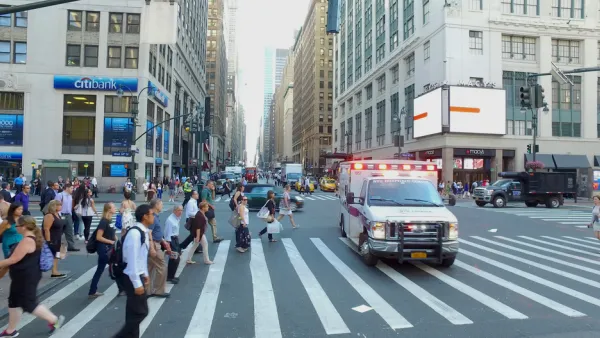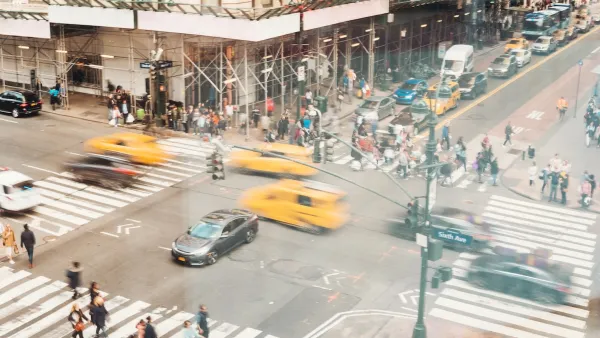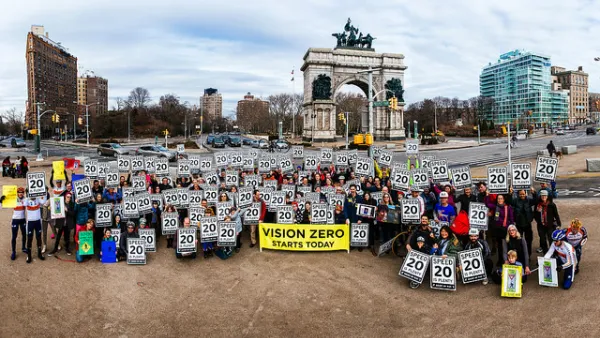It's another one of those crises within a crisis, but driving has been more dangerous during the pandemic.

Christina Goldbaum revisits one of the tragedies inside the tragedy from the pandemic during 2020: increasing numbers of traffic fatalities.
Goldbaum cites the example of New York City specifically: "243 people died in traffic crashes in New York City in 2020 — making it the deadliest year on record since Mayor Bill de Blasio introduced his signature plan to improve street safety in 2014," but the trend was evident in locations all over the country.
Given how many fewer drivers were on the road this year, the traffic fatalities of 2020 defied precedent and logic. "Economic downturns and reduced congestion typically lead to fewer fatal crashes, federal researchers say. But during the pandemic, it seemed that drivers who felt cooped up in their homes flocked to wide open streets," writes Goldbaum. New York officials cited in the article say that most fatal crashes in 2020 involved vehicles traveling at high speeds, late at night, outside the urban core of Manhattan.
The article describes the causes of these effects, but much of the evidence is circumstantial. Police did write a lot more tickets for speeding in California, New York City, and Georgia, according to evidence cited in the article, but police in Minneapolis were widely reported as decreasing traffic enforcement after nationwide protests in response to the killing of George Floyd.
The article concludes with a soundbite from Danny Harris, executive director of Transportation Alternatives, making an appeal to reject the car-centric status quo of pre-pandemic life in the United States.
It's also worth noting that with hospitals and intensive care units full all over the country, now is not a good time
FULL STORY: Why Emptier Streets Meant an Especially Deadly Year for Traffic Deaths

Analysis: Cybertruck Fatality Rate Far Exceeds That of Ford Pinto
The Tesla Cybertruck was recalled seven times last year.

National Parks Layoffs Will Cause Communities to Lose Billions
Thousands of essential park workers were laid off this week, just before the busy spring break season.

Retro-silient?: America’s First “Eco-burb,” The Woodlands Turns 50
A master-planned community north of Houston offers lessons on green infrastructure and resilient design, but falls short of its founder’s lofty affordability and walkability goals.

Test News Post 1
This is a summary

Analysis: Cybertruck Fatality Rate Far Exceeds That of Ford Pinto
The Tesla Cybertruck was recalled seven times last year.

Test News Headline 46
Test for the image on the front page.
Urban Design for Planners 1: Software Tools
This six-course series explores essential urban design concepts using open source software and equips planners with the tools they need to participate fully in the urban design process.
Planning for Universal Design
Learn the tools for implementing Universal Design in planning regulations.
EMC Planning Group, Inc.
Planetizen
Planetizen
Mpact (formerly Rail~Volution)
Great Falls Development Authority, Inc.
HUDs Office of Policy Development and Research
NYU Wagner Graduate School of Public Service




























